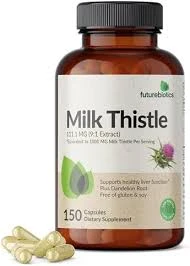
Th12 . 28, 2024 22:59 Back to list
Custom Formulation of Lincomycin Hydrochloride for Enhanced Therapeutic Applications
Custom Lincomycin Hydrochloride An Overview
Lincomycin hydrochloride is a widely used antibiotic that plays a crucial role in the treatment of various bacterial infections. Originally derived from the bacterium *Streptomyces lincolnensis*, lincomycin has been utilized in clinical settings since the 1960s. Its unique mechanism of action, safety profile, and effectiveness against specific types of bacteria make it a valuable tool in modern medicine.
Mechanism of Action
Lincomycin hydrochloride functions by inhibiting bacterial protein synthesis. It binds to the 50S subunit of the bacterial ribosome, effectively blocking the translocation step in protein synthesis. This action prevents the growth and reproduction of bacteria, making it a bacteriostatic agent. Lincomycin is particularly effective against Gram-positive bacteria, including *Staphylococcus aureus* and *Streptococcus pneumoniae*, as well as some anaerobic bacteria.
Indications and Uses
Lincomycin hydrochloride is primarily indicated for the treatment of severe infections caused by penicillin-resistant bacteria or when patients are allergic to penicillin. It is commonly used to manage conditions such as
1. Skin and Soft Tissue Infections It is effective against abscesses and cellulitis. 2. Osteomyelitis Lincomycin can be utilized in cases of bone infections. 3. Pneumonia It is often prescribed for severe cases of pneumonia caused by susceptible bacteria. 4. Intra-abdominal Infections Lincomycin may be used in combination therapy for complex intra-abdominal infections.
Furthermore, it is also employed in veterinary medicine for the treatment of infections in animals, showcasing its versatility across disciplines.
Dosage and Administration
custom lincomycin hydrochloride

Lincomycin hydrochloride is available in both intravenous and oral formulations. The dosage and duration depend on the type and severity of the infection, as well as the patient's age, weight, and renal function. For adults, the typical intravenous dosage ranges from 600 to 1,800 mg per day, divided into several doses. For oral administration, doses usually fall between 500 mg to 1,500 mg per day. It is crucial for healthcare providers to tailor the treatment plan based on individual patient needs.
Side Effects and Considerations
Although lincomycin is generally well-tolerated, it is important to be aware of potential side effects. Common adverse effects include gastrointestinal disturbances such as diarrhea, nausea, and abdominal pain. More severe reactions can occur, including antibiotic-associated colitis caused by *Clostridium difficile*. This condition can lead to significant morbidity and requires immediate medical attention.
Patients with a history of hypersensitivity to lincomycin or clindamycin should avoid use, and caution is advised in patients with severe hepatic or renal impairment. Regular monitoring and patient education on recognizing symptoms of adverse effects can enhance safety during treatment.
Trends in Usage
The use of lincomycin hydrochloride has evolved over the years, especially with the rise of antibiotic resistance. As bacteria develop mechanisms to withstand various antibiotics, lincomycin remains a critical option when treating resistant infections. Researchers are continuously investigating its effectiveness in combination therapies that leverage the strengths of multiple drugs to combat resistance and improve outcomes.
Conclusion
Custom lincomycin hydrochloride has secured its place as an essential antibiotic in both human and veterinary medicine. Its potency against resistant strains of bacteria, along with its established safety profile, makes it a trusted choice for healthcare professionals. As with all antibiotics, it is vital to prescribe lincomycin judiciously to preserve its efficacy and minimize the risk of resistance. As we move forward in the realm of infectious diseases, lincomycin will undoubtedly remain an important ally in the fight against bacterial infections.
-
Top Hemoglobinuria Manufacturer & Supplier Reliable Hemoglobinuria Factory Solutions
NewsJun.24,2025
-
Premium Honeysuckle Products - Leading Honeysuckle Manufacturer & Supplier Factory
NewsJun.10,2025
-
Pulmonary Edema Solutions from Leading Manufacturer & Supplier Reliable Factory Price
NewsJun.10,2025
-
Red Eyes - Leading Red Eyes Manufacturer & Supplier, Premium Quality Factory Price
NewsJun.10,2025
-
Broiler Ascites Syndrome Solutions Top Manufacturers
NewsJun.10,2025
-
Premium Amoxicillin Suppliers Reliable Biomox Mexican Factories
NewsJun.10,2025




